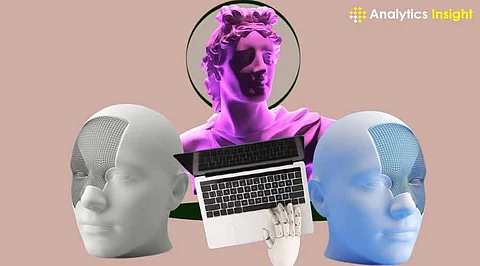

The world of 3D modeling and modeling continues to change, so you need the right tool to get it right. Whether you are an architect, game developer, or animator, there is something for you in the following recommendations.
Here are some of the best 3D modeling applications out there these days, depending on how you're using your software.
Autodesk 3ds Max is among the most professional software concerning advanced 3D modeling. It is primarily used by professionals dealing with game development, interior design, and architecture. Is an advanced tool offering modeling, texturing, and meshing capabilities.
It supports polygonal modeling, NURBS, and patch surfaces and has support for several rendering systems, including Pixar's Renderman and Mental Ray. There is no free version, only a subscription model, and it is Windows only, although one-time perpetual licenses are no longer sold. Though this is very powerful, sometimes it does hang when there are too many plugins.
Pros
Supported by Windows 10, Windows 11
Multi-dimensional modeling feature support
Gamer developers' favorite
A huge store of plugins
Cons
Unstable with too many plugins
Larger budget for the long run
Blender stands out as the best free 3D modeling software, offering a full suite of tools from modeling to rendering and even video editing. It is highly versatile and suitable for both beginners and professionals.
Blender is free and open-source software that is under regular maintenance by the active community. It does not support NURBS, although the real-time rendering engine EEVEE has been quite a plus point, bridging between real-time rendering and offline rendering needs.
This goes very well with a wide range of functionalities and cost-effectiveness, making it an ideal tool for beginners or, rather, those who want to experiment with diverse aspects of the 3D creation process.
Pros
Supported by Windows, macOS, Linux,
Free and opensource
Comprehensive full pipeline model
Strong community support
Cons
Lacks NURBS support
Autodesk Maya is one of the prime choices for animators and VFX artists because of its rich feature set tailored for character creation and simulation of natural elements. With its Bifrost procedural effects and Arnold RenderView, Maya sets a high bar for animation and VFX output.
The complicated interface and system requirements may make it a challenge to handle for first-timers. Maya subscription is available with options for monthly, yearly, or triennial payment schemes, along with a free 30-day trial.
Pros
Supported by Windows, macOS, Linux
Industry standard for animation and VFX
Advanced procedural effects
Arnold rendering for photorealistic results
Cons
Requires a powerful workstation Expensive
ZBrush represents a unique approach to 3D modeling with its brush-based system. This enables artists to sculpt digital clay in real-time. It is particularly successful with detailed, organic objects and shapes. ZBrush is highly popular for 3D printing, especially considering its sculpting powers along with a nonlinear production path that allows for much iterative design. The flexibility of the tool along with an immense toolkit makes it worth it for concept artists and game developers despite a steep learning curve at the start.
Pros
Supported by Windows, macOS
Excellent for photorealistic rendering
Rich plugin support
Ideal for 3D printing
Conns
The initial interface can be overwhelming
SketchUp is famous for its usability and flexibility in architectural and interior design model creation. Its interface is completely friendly to the user and, even the free version is not an exception. Various versions of this software offer everything from simply free basic options to professional and comprehensive tools. Better features are obtained from SketchUp Pro and Studio business and studio versions which are based on photorealistic rendering of models.
Pros
Supported by Windows, macOS
Free version available for home use.
User-friendly and excellent for novices
Full user-generated libraries
Cons
Doesn't have built-in high-quality photorealistic rendering
Rhino excels in surface modeling, especially for geometries whose complexity can be dangerous or exclusive enough to inspire elaborate car designs or complex architectural details. It is apart from most of its competitors through its NURBS modeling capabilities. The toolset of the software is pretty versatile, supporting a variety of plugins and boasting a scripting language, which aids in automating and saving time.
The perpetual software license used in the software is not so common these days. Therefore, when considering long-term value, it could be beneficial. A learning curve, especially for users with very steep interfaces, might be a bit of a challenge.
Pros
Supported by Windows, macOS
NURBS modeling is supported
Flexible due to many different plugins
Licensing is available permanently
Cons
Steep learning curve Unintuitive interface
Although it is particularly about your specific need and budget, there are often criteria to decide on the best 3D modeling software. Strong, professional-grade tools for specialized tasks are provided by Autodesk 3ds Max as well as by Autodesk Maya, whereas flexible features combined with strong community support make Blender and ZBrush unique approaches.
Beginners and architects may often prefer SketchUp, and surface modeling and prototyping have usually preferred Rhino. Each of these tools has its strengths and weaknesses so evaluating them according to your requirements will point out which one best fits your project.
